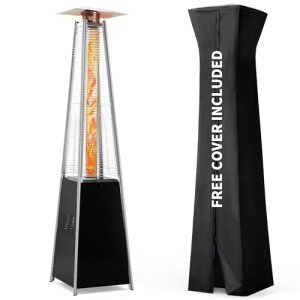The Comprehensive Guide to Fireplaces and Stoves
Fireplaces and stoves have been integral to human civilization for centuries, acting as a source of heat, light, and comfort. These appliances come in various types and have actually developed for many years, catering to diverse choices and technological developments. This short article offers an informative introduction of fireplaces and stoves, highlighting their types, benefits, maintenance suggestions, and installation factors to consider.
Kinds of Fireplaces
The world of fireplaces is abundant and differed. Here are the most typical types:
Wood-Burning Fireplaces:
- Traditional and captivating.
- Requires experienced wood and regular maintenance.
- Produces an enjoyable fragrance and crackling sound.
Gas Fireplaces:
- Offer convenience and ease of use.
- Readily available in vented and vent-free choices.
- More efficient and cleaner than wood-burning choices.
Electric Fireplaces:
- Provide ambiance without the requirement for a chimney.
- Easy to use with remote control options.
- Can be utilized as a supplementary heat source.
Pellet Stoves:
- Use compressed wood pellets as fuel.
- Highly efficient and eco-friendly.
- Frequently equipped with thermostats for temperature level control.
Ethanol Fireplaces:
- Utilize bioethanol fuel, making them portable.
- Do not require venting, which allows for versatile placement.
- Produce a reasonable flame with minimal smoke.
Outdoor Fireplaces:
- Designed for outdoor settings; can be wood or gas-burning.
- Great for entertaining and enhancing backyard aesthetic appeals.
- Frequently built from stone, brick, or metal.
Benefits of Fireplaces and Stoves
Incorporating a fireplace or range into a home offers various advantages:
- Aesthetic Appeal: Fireplaces work as striking centerpieces in any space, adding heat and character to home decor.
- Increased Property Value: Homes with practical fireplaces tend to have higher resale worths.
- Energy Efficiency: Modern fireplaces and stoves are developed to be more energy-efficient, which can lead to reduced heating costs.
- Backup Heating Source: In case of power blackouts, wood-burning and gas fireplaces can work as necessary heating sources.
- Versatile Heating Solutions: Different kinds of fireplaces deal with various heating requirements and way of lives, from relaxing atmosphere to efficient heating.
| Kind of Fireplace/Stove | Fuel Source | Efficiency Rating | Upkeep Level |
|---|---|---|---|
| Wood-Burning | Wood | Moderate | High |
| Gas | Natural gas/LP | High | Low |
| Electric | Electrical power | High | Extremely Low |
| Pellet | Wood pellets | High | Moderate |
| Ethanol | Bioethanol | Moderate | Low |
| Outdoor | Wood or gas | Moderate | Differs |
Maintenance Tips
Proper maintenance extends the life of fireplaces and stoves, making sure safety and efficiency. Here are some vital ideas:
Regular Cleaning:
- Wood-burning fireplaces need to be cleaned after a full season of use to eliminate soot and creosote.
- Gas fireplaces require regular evaluation of the burner and vents.
Routine Inspections:
- Have chimney sweeps perform yearly assessments to recognize blockages or structural damage.
- Examine the seals and gaskets on gas units to avoid leaks.
Fire Safety:
- Install smoke and carbon monoxide gas detectors in homes with fireplaces or stoves.
- Keep a fire extinguisher near the fireplace or stove for emergency situations.
Use Quality Fuel:
- For wood-burning systems, always use seasoned wood; prevent dealt with or painted wood.
- When utilizing pellets, guarantee they are saved effectively to prevent moisture absorption.
Handle Airflow:
- Keep vents and ducts clear to promote efficient ventilation and air flow.
- Think about using glass doors or screens to lessen particles and ash in the living space.
Setup Considerations
Setting up a fireplace or range needs careful consideration of numerous aspects:
Location:
- Choose a place that permits correct clearance and ventilation.
- Consider the layout of your home and the convenience of natural heat distribution.
Building Regulations and Permits:
- Check local policies regarding setups and needed permits.
- Engage an expert to guarantee compliance with safety standards.
Fuel Type:
- Evaluate your fuel choices based upon schedule, cost, and environmental effect.
- If choosing for gas, make sure existing gas lines can accommodate the brand-new home appliance.
Ventilation:
- Proper venting is important for safety and efficiency, especially for gas and wood-burning units.
- Speak with an expert to identify the very best venting option.
Visual Consideration:
- Select a design that matches your home's interior.
- Consider mantels, surround products, and colors that match your decoration.
FAQs
What is the very best kind of fireplace for heating?
Gas fireplaces are generally more efficient for heating, while wood-burning fireplaces supply more ambient warmth.
How typically should I clean my fireplace?
Wood-burning fireplaces ought to be cleaned a minimum of when a year, while gas fireplaces need less regular attention depending on use.
Can I install a fireplace myself?
While some property owners may try DIY installation, it is suggested to employ a professional to guarantee security and compliance with building codes.
Are electric fireplaces efficient?
Yes, electric fireplaces are extremely efficient and can work as reliable supplemental heating sources, particularly in smaller areas.
What is the lifespan of a fireplace?
The life expectancy of a fireplace varies depending on the product, type, and upkeep; however, a properly maintained wood-burning fireplace can last over 30 years.
Fireplaces and stoves remain timeless features in homes, offering warmth and ambiance. Comprehending Fireplace Brands USA , advantages, and maintenance requirements can help house owners make informed decisions about setup and care. With mindful planning and regular upkeep, these home appliances can boost both the comfort and value of a home for years to come.

